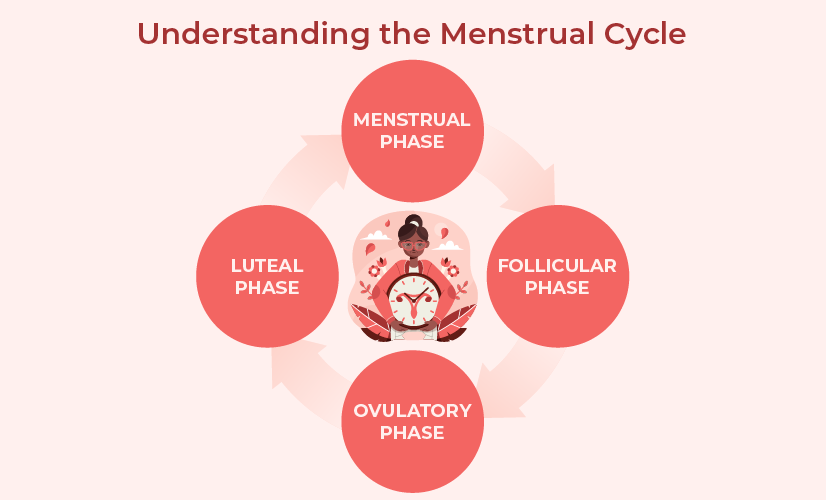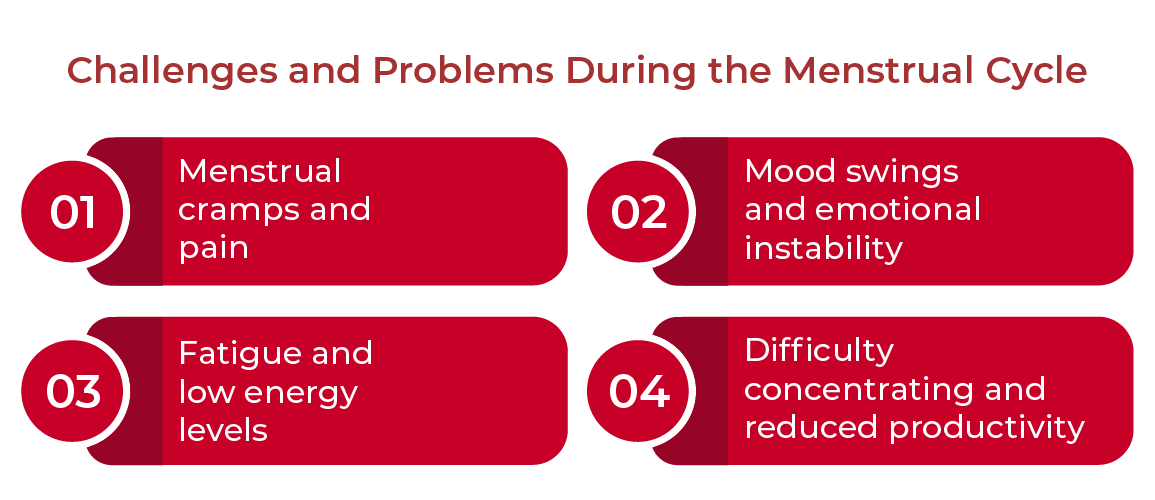Introduction
The menstrual cycle is a critical aspect of women’s health, affecting both physical well-being and emotional balance. On average, the period cycle length is 28 days, but it can vary from woman to woman. Each cycle is essential for reproductive health, but it also influences energy levels, mood, and cognitive functions. Many women experience dips in productivity during their cycles due to hormonal changes. However, Reiki therapy, an ancient energy healing technique, can offer support in managing these challenges. By balancing the body’s energy, Reiki can help women maintain focus and productivity throughout the cycle.
Understanding the Menstrual Cycle

The menstrual cycle is divided into four distinct phases, each marked by hormonal shifts. These changes influence how women feel physically and emotionally during each phase.
1. Menstrual Phase
The menstrual phase marks the beginning of the cycle and typically lasts between 3-7 days, during which the uterine lining is shed. During this time, hormone levels, especially estrogen and progesterone, are at their lowest. Women commonly experience cramps, low energy, and fatigue, making it difficult to stay productive.
2. Follicular Phase
The follicular phase starts after menstruation and typically lasts around 7-10 days. During this phase, estrogen levels rise, promoting the growth of follicles in the ovaries. Women often notice an improvement in energy levels, mental clarity, and overall mood as the body prepares for ovulation.
3. Ovulatory Phase
Ovulation occurs midway through the cycle, lasting 3-5 days. The ovulatory phase is characterized by peak estrogen levels, which trigger the release of an egg. Many women feel their most energized and productive during this phase, making it an ideal time for tackling demanding tasks.
4. Luteal Phase
After ovulation, the luteal phase begins, lasting around 10-14 days. During this phase, progesterone levels rise to prepare for a potential pregnancy. If pregnancy does not occur, these levels drop, leading to PMS symptoms such as mood swings, bloating, and fatigue. These symptoms often hinder productivity as the body prepares for the next menstrual phase.
Effects of the Menstrual Cycle on Productivity

The hormonal changes during the four phases of the menstrual cycle directly impact productivity. Here’s how:
1. Menstrual Phase
During the menstrual phase, women experience physical discomfort such as cramps and low energy. These symptoms make it hard to stay focused and productive.
2. Follicular Phase
As estrogen rises in the follicular phase, women experience better mental clarity, creativity, and mood. This is often a high-energy phase, ideal for brainstorming and working on complex projects.
3. Ovulatory Phase
The ovulatory phase brings the highest energy levels and mental sharpness, making it a great time to pursue challenging tasks. This phase often leads to a surge in productivity for many women.
4. Luteal Phase
As PMS symptoms begin to set in during the luteal phase, energy levels drop, and mood swings become common. Fatigue and irritability make it harder to concentrate, and productivity often dips.
Challenges and Problems During the Menstrual Cycle
Many women face recurring challenges that affect their ability to work efficiently during their cycle, including:

1. Menstrual Cramps and Pain
Intense menstrual cramps can greatly hinder productivity, causing discomfort that makes concentration challenging.
2. Mood Swings and Emotional Instability
Hormonal fluctuations throughout the cycle can cause emotional instability, especially during the luteal phase, when PMS symptoms like mood swings and irritability are common.
3. Fatigue and Low Energy Levels
Fatigue, especially during the menstrual and luteal phases, can cause a lack of motivation and lower productivity.
4. Difficulty Concentrating and Reduced Productivity
Cognitive functions, such as focus and memory, may decline due to hormonal shifts, making it harder to maintain productivity.
Reducing Menstrual Cycle Problems with Reiki Healing
Reiki healing is a holistic approach that can alleviate many of the physical and emotional symptoms associated with the menstrual cycle. By balancing the body’s energy, Reiki helps women manage their cycles with greater ease and maintain productivity.
Introduction to Reiki Therapy
Reiki therapy is a form of energy healing that originated in Japan. It involves channeling life force energy through the hands to balance the body’s energy centers, also known as chakras. Reiki promotes relaxation, reduces stress, and helps the body heal itself. A trained Reiki healer uses gentle hand movements to transfer healing energy, relieving physical pain and emotional stress.
How Reiki Can Help Balance Hormones and Alleviate Menstrual Symptoms?
Reiki works by restoring the body’s natural energy balance, which can help regulate hormones and reduce the symptoms of PMS. Regular Reiki sessions can relieve menstrual cramps, calm mood swings, and boost energy levels. Reiki healing is particularly effective for managing stress, which can exacerbate menstrual symptoms. By promoting relaxation and improving energy flow, Reiki can support a smoother menstrual cycle.
In India, women seeking relief from menstrual discomfort can benefit from the expertise of a certified Reiki healer in India, Dr. Avisha Mathur. She specializes in balancing hormones and alleviating menstrual symptoms through tailored Reiki sessions. By addressing both physical and emotional symptoms, she helps women navigate their menstrual cycle phases with ease, enhancing productivity and well-being.
Conclusion
Understanding the importance of the menstrual cycle and its four phases is key to managing the challenges it brings. Hormonal fluctuations can lead to reduced productivity, mood swings, and fatigue, especially during the menstrual and luteal phases. Reiki therapy provides a holistic way to address these challenges naturally. By booking a session with a professional like Dr. Avisha Mathur, women can use Reiki to manage their symptoms and stay productive throughout their cycle. With the right approach, it’s possible to work with your body’s natural rhythm rather than against it.
 By
By


